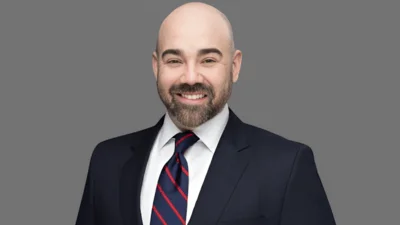The 2012 budget that House Republicans passed this month proposes a dangerous rewrite of the tax code, so sweeping in its scope that it would place enormous additional burdens on the middle class while steering yet more benefits to the very wealthy.
Their goal of cutting the top tax rate to 25% -- from 35% -- includes few specifics. But it is clear that the only path toward that rate leads down an expensive road for most Americans.
There's a reason that it has been a quarter century since we last undertook major tax reform, despite years of dialogue and debate: It is not easy to accomplish. But with a policy proposal so lopsided toward the richest Americans -- the only segment of our country that experienced real income growth in the last 25 years -- Republicans make real tax reform even more difficult.
If there is any chance of undertaking fundamental tax reform, we must first arrive at a bipartisan set of goals based on simplicity, efficiency and fairness -- similar to the foundation of our effort in 1986. In the same way many feel now about the Bush tax cuts, a strong view existed then that the tax cuts of 1981 went too far in benefiting the very wealthy.
The commonalities end there. In the five years leading up to the 1986 reforms, Congress enacted three separate deficit-reduction revenue measures to put us on a more sustainable fiscal path. Today, while there is broad agreement on the need to address our deficits, there is little common ground on how to achieve that goal responsibly.
Republican Budget Chairman Paul Ryan's budget illustrates those stark disparities. The path he proposed aims to turn back the clock on more than a half-century of progress that helped foster the American middle class.
The call for dismantling Medicare is the most obvious and troubling example, but the proposal to rewrite the tax code to benefit the wealthiest Americans and burden the middle class is equally dangerous.
Income equality has ballooned since 1986. The average income of the bottom 90% of Americans has remained flat during that period, when adjusted for inflation. The richest Americans, meanwhile, have become far wealthier. The top 1% has seen incomes grow by 50% -- an average of $400,000 -- since 1986, in inflation-adjusted dollars. The top tenth of 1 percent: 60% growth, or $2 million.
In 1986, a great deal of work went into ensuring that one part of our society was not funding a tax cut for another.
But the Republican budget proposal completely disregards that principle. By assuming that the 2001 and 2003 tax cuts are all made permanent, it locks in a policy skewed to benefit the very highest earners.
Nearly 80% of the benefit of extending the upper-income tax cuts last year -- more than $60 billion -- went to just 315,000 households making more than $1 million.
The Republican goal of reducing the top individual tax rate to 25% doesn't say how that goal would be reached or what its consequences would be. It almost certainly would be necessary to eliminate major provisions that helped build the broad middle class of this country, such as the mortgage interest deduction and the employer-provided health care exclusion. Others on the possible chopping block: the child credit and the Earned Income Tax Credit, both of which help the working poor.
Even if there was agreement -- and there's not -- to eliminate provisions that disproportionately benefit upper-income households, such as the lower preferential rates for capital gains and dividends, a reduction in the individual tax rate as dramatic as what Republicans have proposed would still require choices that would increase the tax burden on working families and reduce the fairness of our tax system.
We need tax reform that directly encourages job creation in the U.S., helps working families, and keeps our deficit in check. What we simply cannot pursue is one-sided changes to the code, under the guise of tax reform, that focus the pain on the middle class and the gain on the very wealthy.








